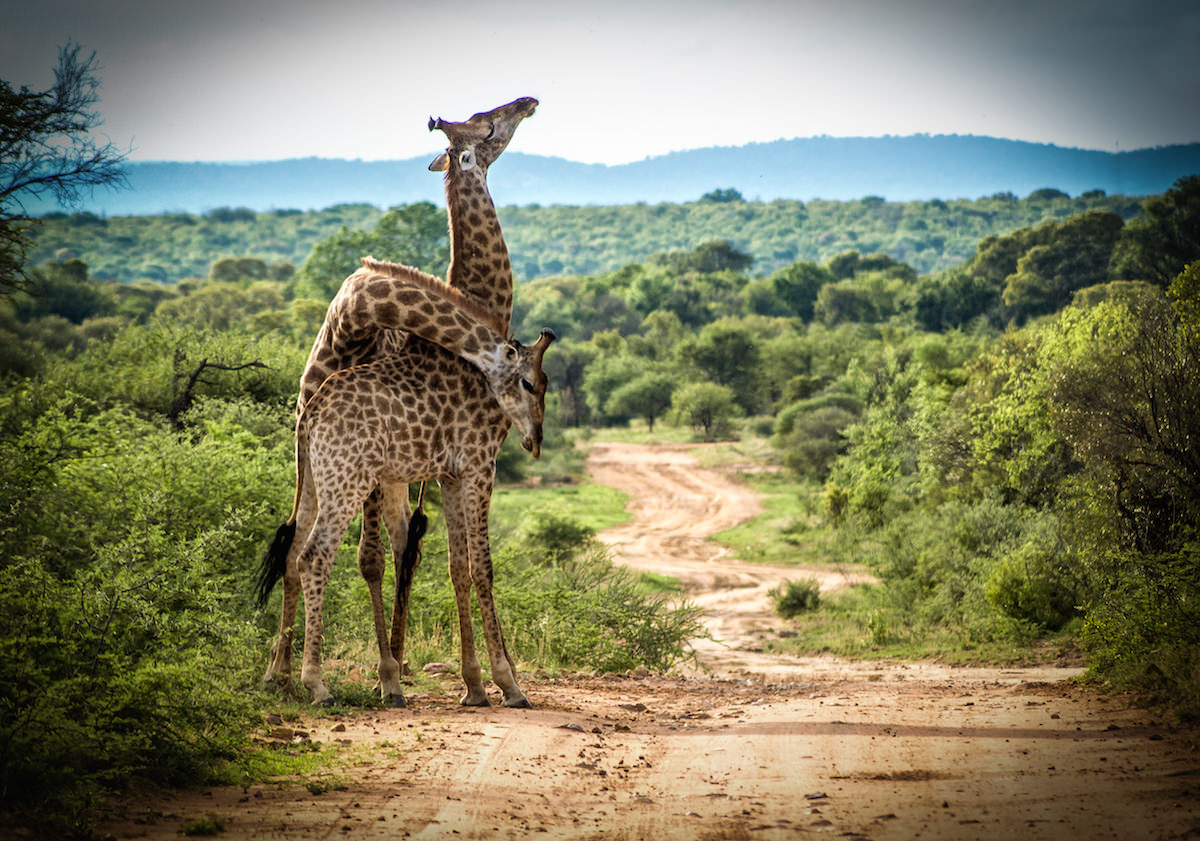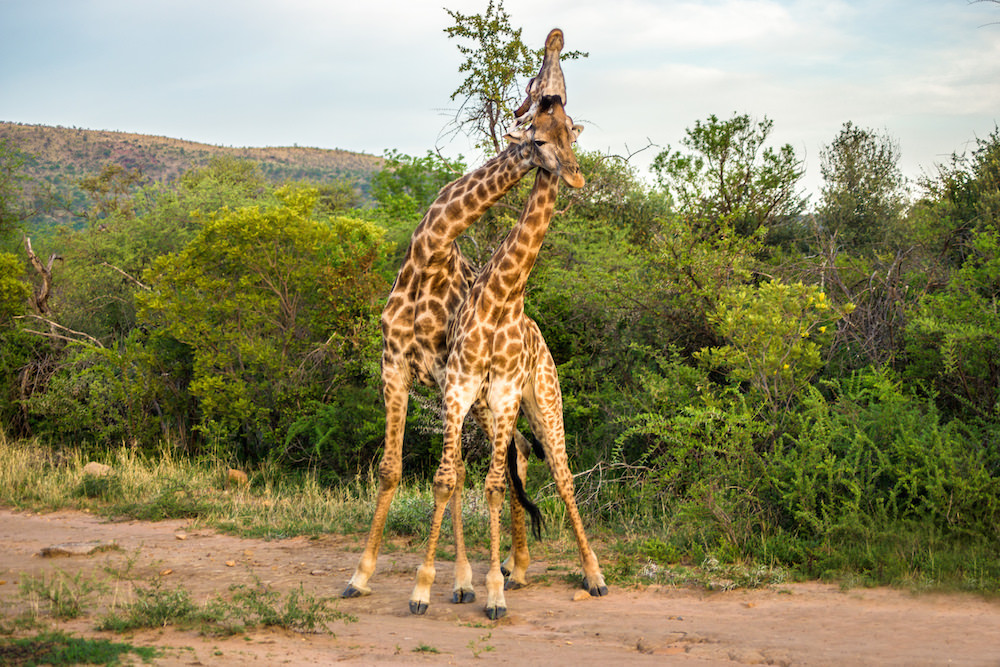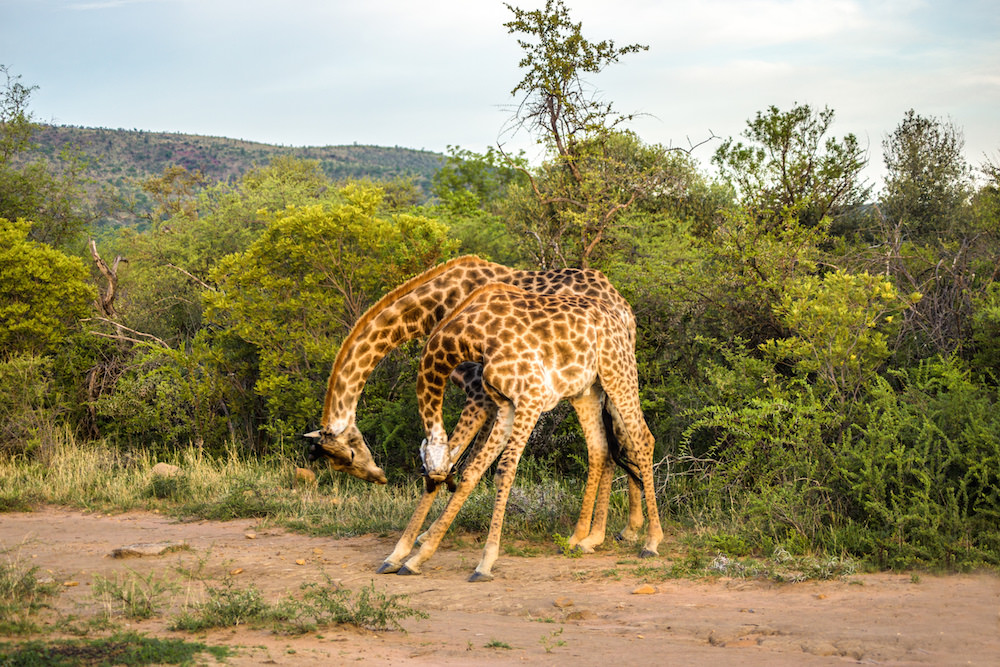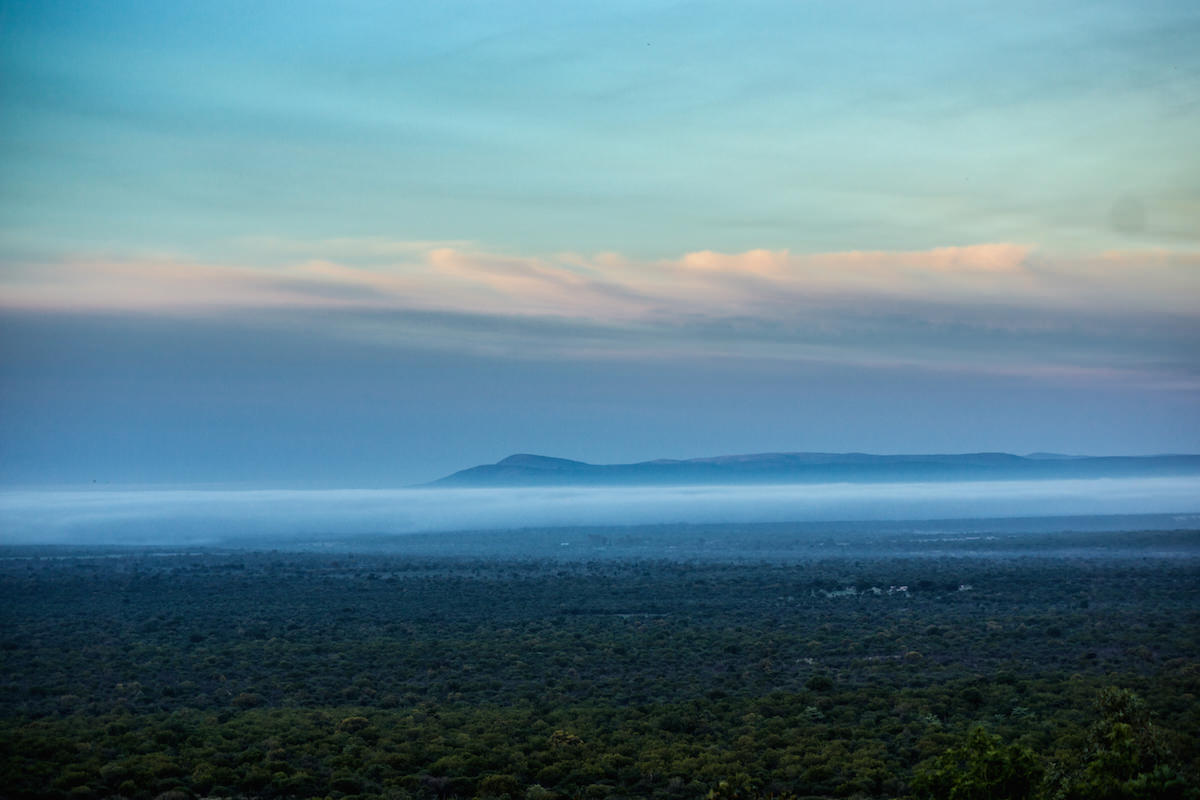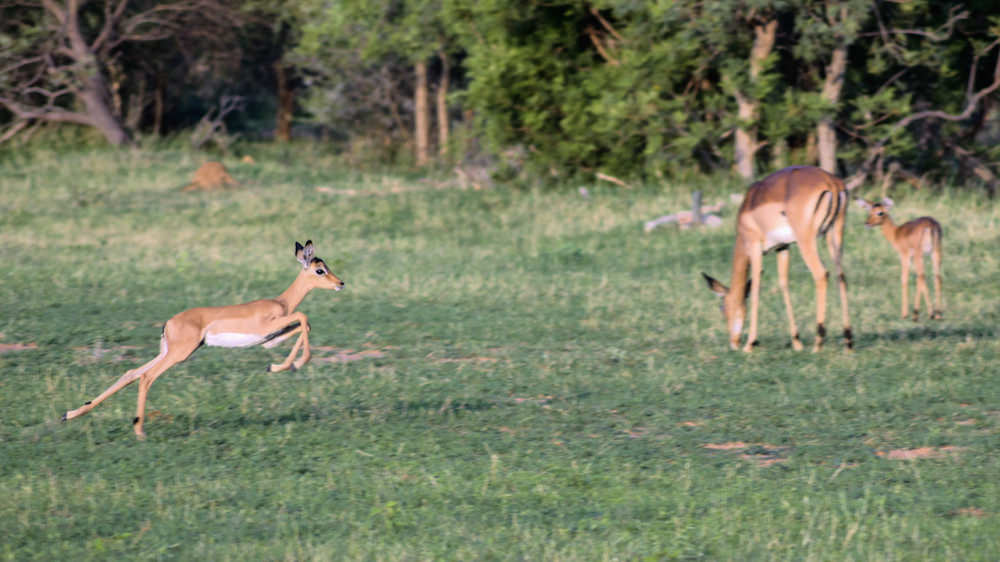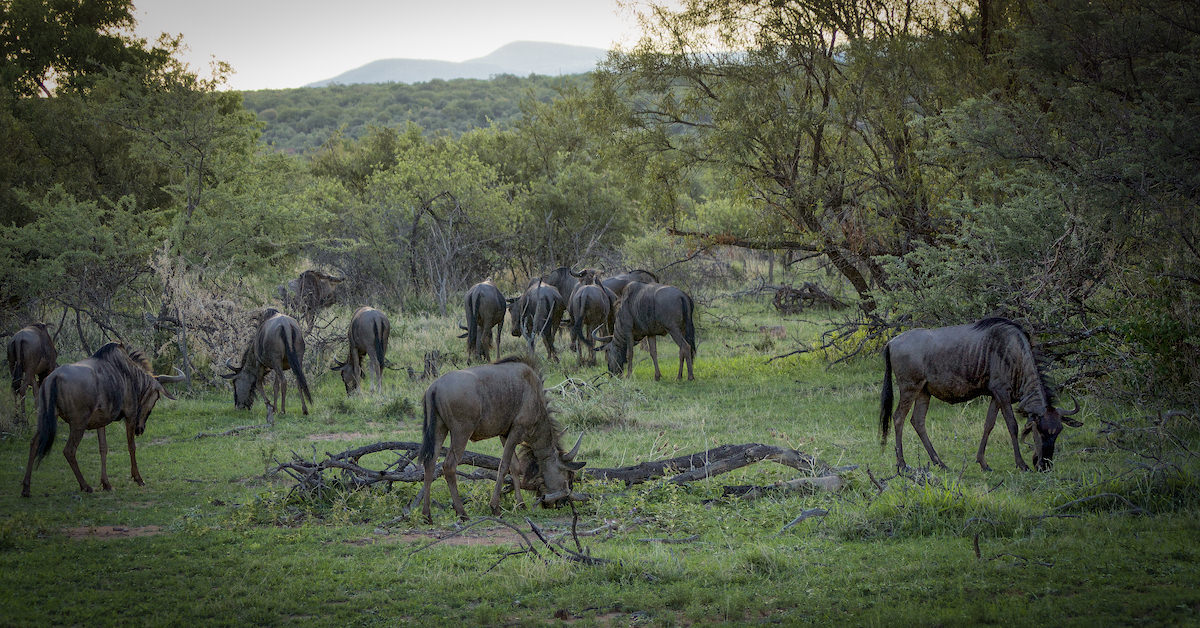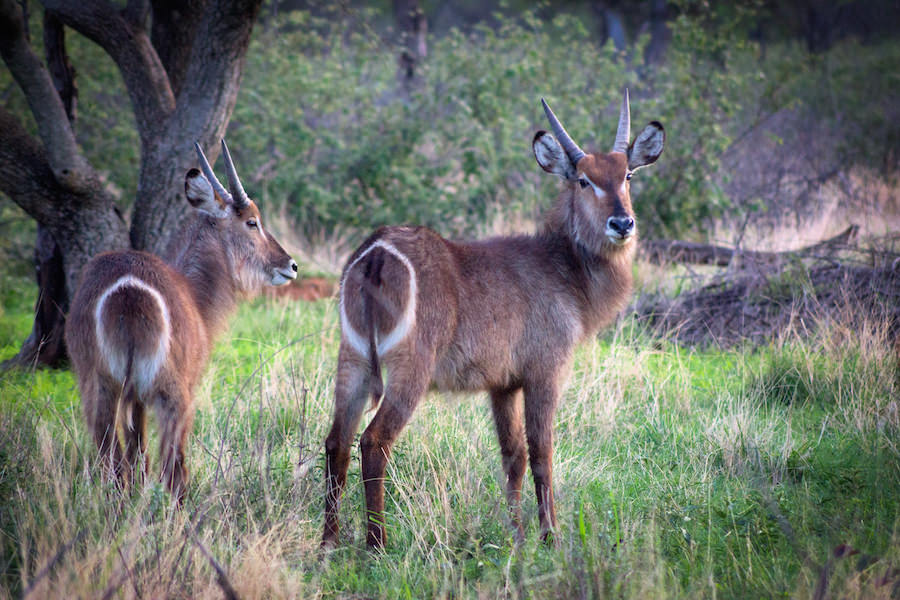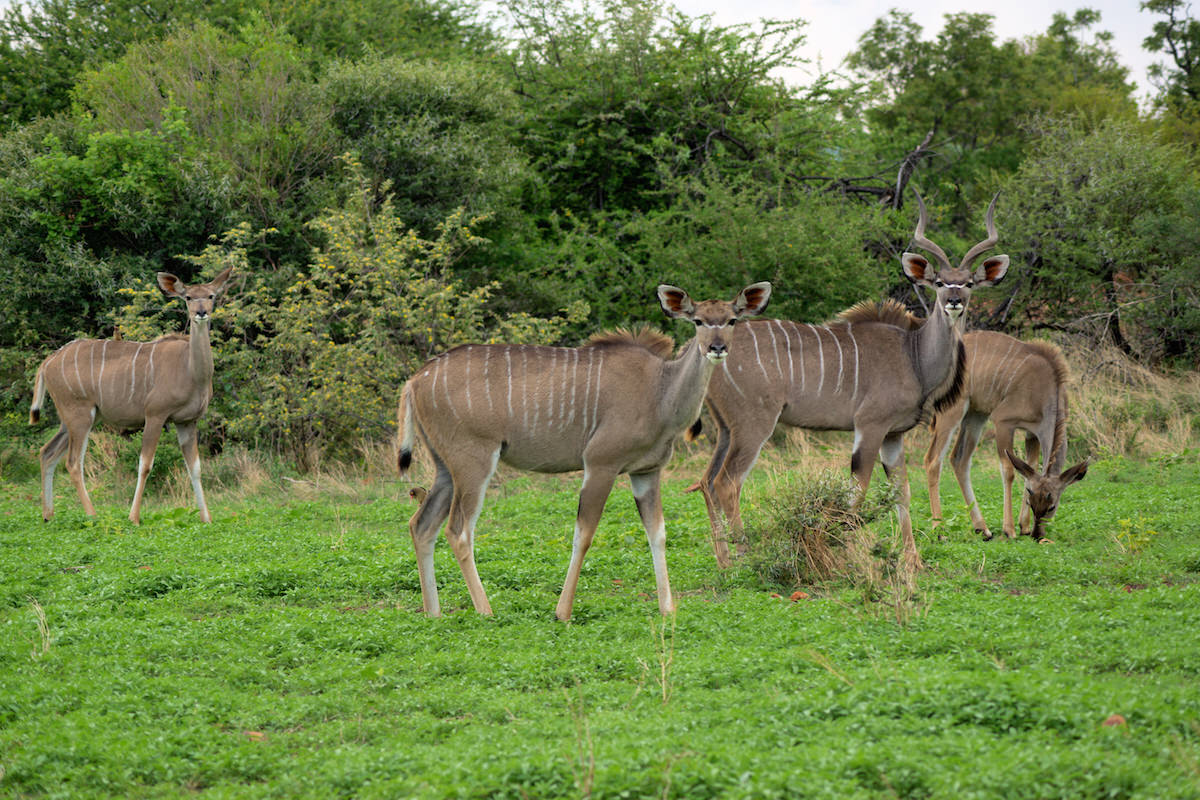In 1995 Elephants that were earmarked to be culled in the Kruger National Park, were relocated to Mabalingwe Nature Reserve today there are 21 Elephant in the Reserve.
Read Moresightings
A Tower of Giraffe steal the show.
The summer rains have turned the Bushveld into many shades of green. Trees are sprouting new leaves and the dams are filling up fast.The view from Warthog Lodge over the lush Bushveld never fail to impress.The Woodlands Kingfishers have returned from their winter climes, their unmistakable melodic calls heralding their arrival. Other migratory species such as the Wahlberg's Eagle will wait until later in the year to return - and return they will as they chase the summer; kites and cuckoos, swallows and bee-eaters, starlings and fly-catchers, a myriad species to delight and perplex us.
The afternoon game drive was spectacular, we came upon a tower of 15 to 20 giraffe in the road going about their business. We stopped and watched and got treated by a rare sight. Two males fighting for dominance. The two challengers in the conflict were an older bull and a young male.
In a giraffe fight, males stand side-by-side, pushing and shoving to judge which is strongest.
In evenly matched meetings, blows are sometimes exchanged - dealt by the giraffes' powerful, muscular necks.
The horn-like structures on the stop of the giraffes heads, called ossicones, can inflict injuries but, according to experts, fights rarely get this serious.
"Normally giraffes size each other up and after a bit of stand off and a few swings the fun is over," said Dr Julian Fennessy from the Giraffe Conservation Foundation, based in the UK and Namibia.
"When the battles are serious then it often ends in the subservient male skulking away. However, it can end in the death of one of them," he added.
This exchange was not that severe the older bull clearly confident of his position within the herd.
As always, the sunrises and sunsets have been breathtaking in their simplicity and grandeur, and also in allowing all of us to put our lives and those of others, be they man or beast, into proper perspective.
Another sure indicator of summer is the morning and evening melody which plays around the waterholes, echoing across the bushveld. Unmistakable frog calls, chirping insects and birdsong all weave their tunes along the riverbanks, thickets and ponds. Every water source teems with these creatures all intent on feeding, nesting and breeding in an endless, ageless, ongoing cycle
The impalas have a lot of youngsters running around at the moment. In fact most animals will time the births of their young to the rainy season, which makes the most sense really. There is more than sufficient water, food and shelter at this time of the year, making their chances of survival that much greater than if they had to be born in the dry season when all those things are hard to come by.
During one evening Braai, we had an unexpected visit by a sounder of Bush pigs, that helped themselves to most of our fresh vegetables and fruit.
We got treated by displays of amazing animal behaviour. In one instance, young Impala were running around like naughty teenagers. Trying to outdo one another with their speed and jumps. Their mothers decided enough now. Making a sound between a lion's roar and a dog's bark they descended on the youngsters to sorted them out.
We came upon big herds of Zebra, Wildebeest and Buffalo. The Elephant and Rhino did not make an appearance. Curcum Dam's resident crocodile was at his favourite place on "bird" island basking in the setting sun. We did not spot the Hippos, but frequent sightings of Kudu made up for that.The Giraffe stole the show this weekend, we again came upon the two males still fighting and what a fascinating show it is. On our last night, we got treated to 2 giraffes getting it on and what a strange sight that is.
We were fortunate to observe a large group of banded mongoose as they forage for food. They forage in the morning for several hours and then rest in the shade. They will usually forage again in the late afternoon. Mongooses use their sense of smell to locate their prey and dig them out with their long claws, both in holes in the ground and holes in trees. Mongoose will also frequent near the dung of large herbivores since they attract beetles.Low grunts are produced every few seconds for communication. The group had with them this season's pups. Each pup is cared for by a single adult "escort" who helps the pup to find food and protects it from danger.
And so we say farewell to another spectacular week in the South African bushveld in the hope that there will be more amazing encounters to follow in the weeks to come.
Share this post Tweet


